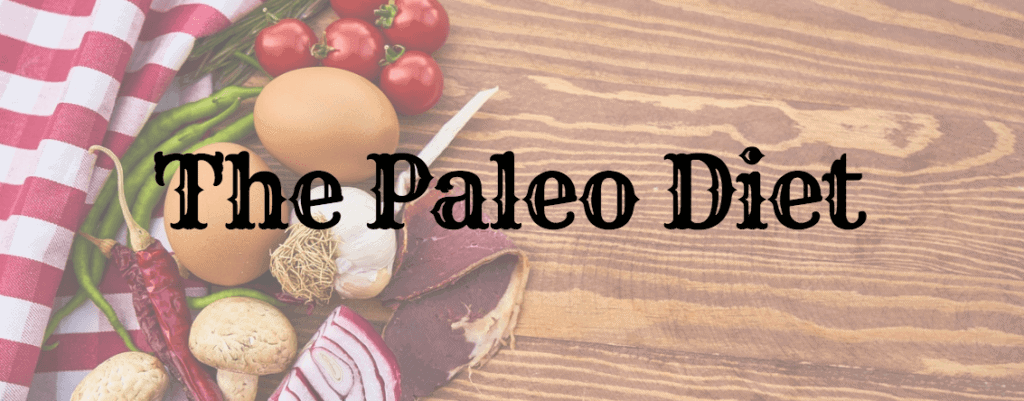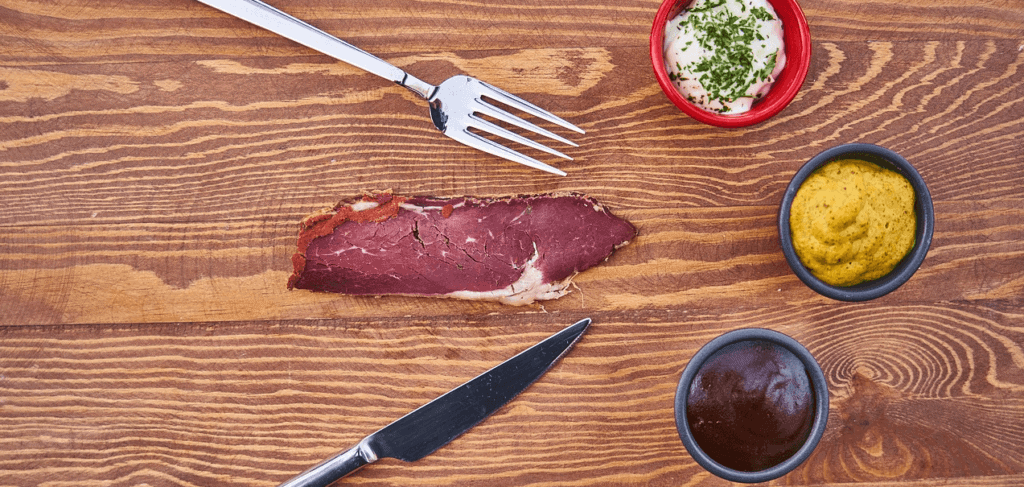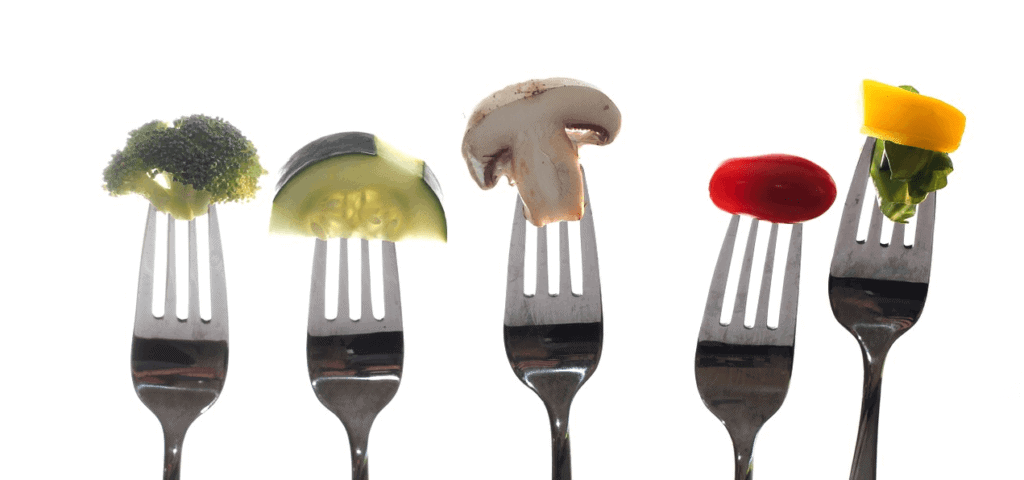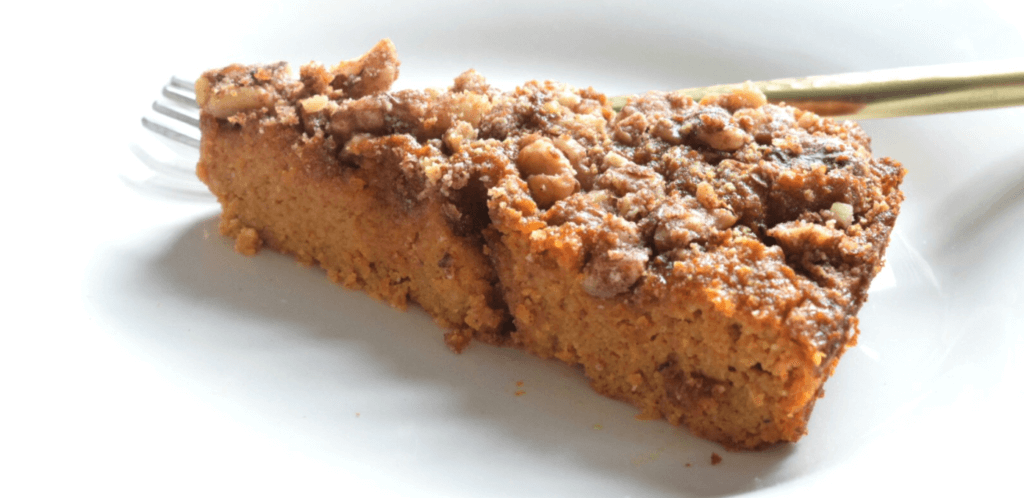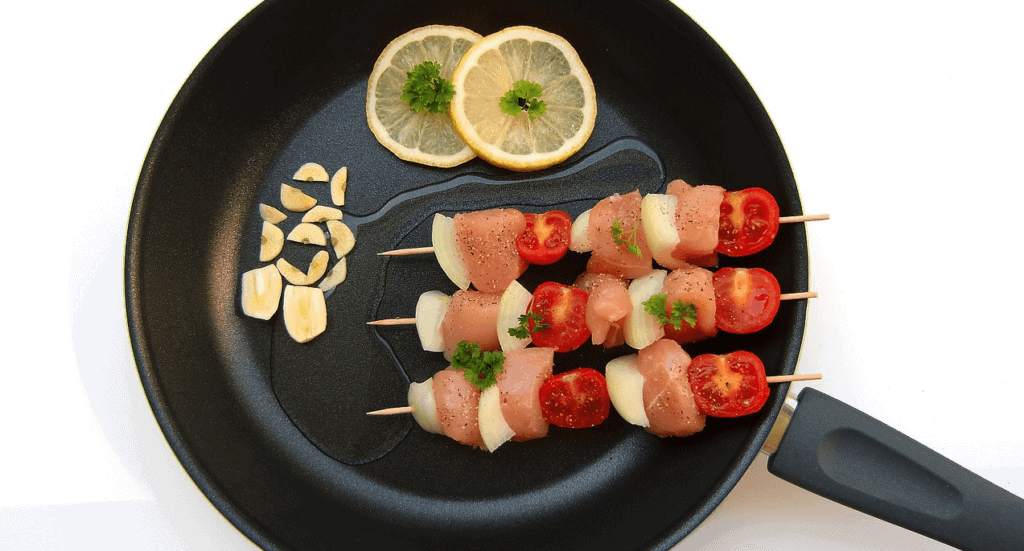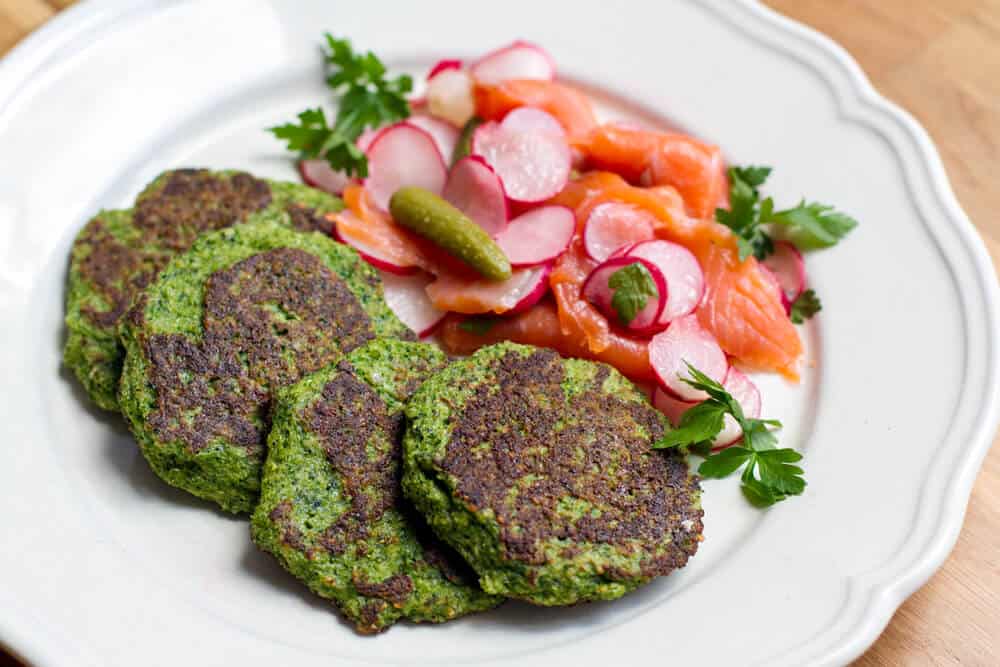Paleo Diet – Eat Like a Caveman to Lose Weight - 27 Things You Need to Know
The Paleo diet is a modern eating plan based on what prehistoric humans ate millions of years ago. During the Paleolithic era — 2.5 million to 10,000 years ago — hunters and gatherers typically ate foods such as fish, lean meats, seeds, nuts, fruits and vegetables. Grains, flour and dairy products are not included because the era predates crop cultivation.
Paleo Diet – Eat Like a Caveman to Lose Weight Video Review
What is the Paleo Diet?
Returning to the way our ancestors ate is the Paleo Diet definition.
How To Start A Paleo Diet?
A person should always consult their physician before starting any diet. Once you are cleared, find out what foods you need for the menu.
Do the research.
No diet is natural, and there will be some obvious pitfalls and setbacks. But once you’ve made up your mind to get started, go to the grocery store with your Paleo diet shopping list. You will need to adopt a mindset of success. And be sure to stay from environments that are not conducive to helping you reach your goals.
“There’s really no trick to starting the diet. You just stop eating non-paleo foods like grains and dairy, load up on meat, fish, eggs, fruits, vegetables, and nuts instead. It’s similar to other diets in that the biggest benefits come from not having all the refined and processed foods that most of us tend to overeat. Paleo, as a concept, is an easy way to eat more whole foods and less of everything else,” states Lou Schuler, a Certified Strength and Conditioning Specialist.
The clinically-proven weight-loss app Noom helps you track the foods you eat so you know you’re leaving those processed meals behind.
Is the Paleo Diet Healthy?
The Paleo diet does have significant health benefits. First of all, there are some foods that you are not allowed to eat like sugars, processed foods, dairy, cereal and junk food. However, there is an issue of the red meat, which is eaten generously on the Paleo diet.
Since the diet is focused strictly on what the hunters and gatherers ate during the Paleolithic Era, it is considered pretty safe overall.
Debunking Paleo
Time to set the record straight, once and for all! Although the Paleo diet has some valid healthy points versus the current average person’s diet of carbs and more carbs without any real direction, it bothers all of our team on a few fronts as well.
The main idea involves eating what the “carnivore” cavemen ate back in the Paleolithic Era or Stone age.
Here is why that makes absolutely, positively NO sense.
Humans never were designed to eat animal flesh as a staple food daily.
Science is sexy and pretty hard to argue with:
Since NO animal can take nitrogen from the air and incorporate it into an amino acid, it is obvious that: ALL protein is made by plants and only by plants!
Why this is so very important in this upcoming struggle for understanding Carnivore vs. Herbivore is because the animal flesh we consume as “protein” in our diet is only the middle-man who has already eaten the plants to gain the protein in the muscle mass, so why not just cut out the middle-man and eat the plants ourselves?
Are human beings the Carnivores that so many supporters of the Paleo Diet would want you to believe?
We are not, and never will be built to consume, digest, and survive if we continue to do so regularly.
The whole thought process that we (humans) were built to digest animal flesh just is not true.
As the many thousands of different regional Paleolithic Era diets were dependent on their surroundings and ate whatever was the easiest to obtain.
Think of this for a second, if man uses much more energy to hunt down an animal for food, (which only would last a day without refrigeration, and remember humans cannot eat tainted meat – only carnivores can) then he will gain from eating that said animal…he will die of starvation.
As Dr. Milton Mills, MD reveals in a wonderfully informative talk recently called, “Are Humans Designed to Eat Meat?” where he cut down a two-hour presentation into only 78 minutes.
Here are some of his PowerPoint slides depicting time and time again more scientific reasons why we are NOT designed for meat consumption.
When studied in the wild, animals hunted down the weakest and easiest prey to catch. They have the advanced sense of smell to pick out the slowest, sickest one in the pack.
“A lot of the animals we see, especially the ones that go out at night, have a special, reflective surface right behind their retinas,” says Dr. Cynthia Powell, a veterinary ophthalmologist at Colorado State University, according to NPR.
“That light-reflecting surface, called the tapetum lucidum, helps animals see better in the dark.
“When light enters the eye, it is supposed to hit a photoreceptor that transmits the information to the brain, Powell explains.
“But sometimes the light doesn’t hit the photoreceptor, so the tapetum lucidum acts as a mirror to bounce it back for a second chance.
“Cats often have eyes that glow bright green, though Siamese cats’ eyes often glow bright yellow. Cat tapeta also tend to reflect a little bit more than dogs, Powell says.
“One of my favorites are miniature schnauzers,” she says, which have eyes that tend to glow turquoise. “It’s really beautiful.”
Humans are very efficient walkers, as we literally throw our center of gravity forward, out of our body, then extend a leg/foot out to catch the propelled mass pushed by gravity.
Thus the reason that when stubbing the toe, or tripping on a seam of concrete can put us down face first quickly and awkwardly to say the least.
Humans have saliva with the ptyalin enzyme for pre-digestion of food while possessing an extremely weak hydrochloric acid in our stomachs.
This caught all of us by surprise, but makes total sense. A common factor in just about every diet plan is to eat smaller portion sizes, more times a day to sustain weight loss.
Carnivores only came back to the camp one out of seven days of hunting with any food.
Sometimes that one meal, even if larger than humanly possible, would have to last until the next kill or what could be five to six days later. WOW, can you imagine eating almost 18 times our usual 1,200 calories daily in ONE sitting?
This was again simple science, factual information, common sense differences why the human body was NOT created to eat meat.
Dr. Milton Mills notes two or three separate times during the one hour 18-minute talk, about how much more data and slides he removed to cut down the time in half.
Most mothers who read these slides are grateful for single births and not having to bear a litter, which is the case most often with carnivores.
The facts keep mounting, and the next ones become rather disturbing for what potential future issues are still undiscovered due to the newest clinical studies released each month.
Ignoring the facts at hand, and continuing on the burger train or steakhouse wagon much into the future spells out a dim view for many individuals.
Dr. Mills says, “Going vegan or even vegetarian is compared to good sex. If you are not enjoying it, then you must be doing it wrong!”
As all sides to any argument have good points and bad, this just adds more to the “CONS” side of the ledger tablet.
Paleo Diet Basics
Paleo diet basics include guidelines to kickstart your success:
- Strictly follow the higher-fat, lower-carbohydrate rules.
- Eat generous amounts of fat.
- Eat generous amounts of vegetables.
- Eat a moderate amount of fruit.
- Cut all cereal grains and legumes out of your diet
- Eliminate all sugars and dairy from your diet.
- Add a moderate exercise plan to your program.
Track your food intake and exercise using a weight-loss app like Noom.
Paleo Diet Guidelines
The Paleo Diet Guidelines encompass everything you need to know about losing weight and staying healthy. As Health.com says, the diet consists of eating certain foods including fish, seafood, lean meats, vegetables, fruits, nuts and legumes. The plan also means there are certain restrictions such as sugar, processed foods, dairy products, added salt and junk foods. With the diet, you may eat as much as you like, within reason.
Paleo Diet Rules
To be successful on the Paleo diet, there are specific rules you must adhere to. First of all, you can only eat lean meats, fish, vegetables, fruit, legumes and nuts. The good news is, there are hundreds of items within those categories. You are not allowed to eat processed foods of any type – sugars, coffee, salt or grains. Since the goal of the diet is to eat as our ancestors did, only specific foods are allowed. But like any other diet, you should always run it by your physician to see if it is the right diet for you.
What To Eat On Paleo Diet
Dieters often ask “What can I eat on the Paleo diet?” There are a variety of books and articles that outline what the Paleo diet is and what an individual is allowed to eat. Since the dieter is following the principles of what was eaten by humans during the Paleolithic Era, there are only certain allowable foods: fish, lean meats, vegetables, nuts, legumes and fruit, according to BBC GoodFood. According to Paleo diet reviews, there are some delicious meal recipes designed to keep the dieter satisfied.
Paleo Diet Foods
Paleo diet foods is an extensive list you use when you learn how to start. Paleo diet features a specific selection of fruit, vegetables, meats, fish, and nuts and legumes. These foods are part of the same diet that was followed by humans during the Paleolithic Era. It is believed to offer many tremendous health benefits. According to research, the foods that our ancestors ate helps with weight loss and promotes good health.
Paleo Diet Food List
The Paleo diet food groups are an extensive list made up of meats, fish, fruits, vegetables and nuts and legumes, similar to the Atkins Diet or maybe the Caveman Diet. According to WebMD, there is a quick food list available to tell dieters what types of foods they can expect to enjoy on the program, as well as items that should be avoided. A more specific list:
- Pasture-raised and grass-fed meats
- Seafood of all types
- Vegetables of all types
- Any type of egg
- Any type of fruit
- Nuts and seeds
- Certain oils like olive oil
Paleo Diet Breakfast
There are some delicious Paleo diet breakfast ideas. While you can eat eggs on the Paleo diet, there is a boatload of other options. The recipe ideas are simple and will satisfy your appetite. If you get bored and want to mix it up, check out the list of Paleo diet recipes. Delicious Paleo egg muffins are made with just eggs and veggies. Apple muffins are a great grab and go, and they will also give you a great deal of energy. An apricot power bar will not only satisfy your sweet tooth, but it also provides you with the proper vitamins and nutrients.
Paleo Diet Snacks
According to Greatist, one of the best things about Paleo diet meals is the ability to have snacks. A lot of people may wonder how does the Paleo diet work if you’re allowed to eat snacks? Easy. Just because a diet has limitations doesn’t mean foods can’t taste good. Snacks are very no-nonsense treats that can help satisfy hunger between meals. There are many great snacks to choose from like cauliflower popcorn, pumpkin hummus and springtime guacamole.
Paleo Diet Desserts
Just because you are on a Paleo diet doesn’t mean you can’t enjoy something sweet. No, you can’t eat sugar because it’s not part of the diet guidelines. There are dozens of sugar-free, yet delicious desserts that will satisfy even the most discriminating sweet tooth. Try simple fruit skewers on the grill. How about a mango and strawberry sorbet? The Paleo granola will knock your socks off. The diet proves that sugar-free doesn’t mean flavor-free.
Paleo Diet Meal Plan, Meals and Menus
There are many variations for the meal plans. As long as the dieter sticks within the guideline of lean meats, fruits, vegetables, fish, nuts and legumes, you can pretty much eat what you like. It is advisable that you make meals in advance.
This will save you a great deal of time. Many tasty Paleo recipes can be found online. For dieters who have a busy schedule, ready-made Paleo diet meal plans are also available.
With a 14-day trial of Noom, which includes an extensive food database, it’s easy to create Paleo recipes and track your macros (carbohydrates, proteins, and fats).
Paleo Diet Meals
On the Paleo diet, you may enjoy a variety of delicious breakfast, lunch, dinner and snack choices. According to UltimatePaleoGuide, you may design your meal plan based on the food choices, or there are some Paleo diet books to get more information about the meals. These meals are healthy, nutritious and geared to help you lose weight. Some of the Paleo plans are designed to give you a full week of recipes. It is advisable to go by the 5/15 plan, which means that the meal should only take 15 minutes to make and use only five ingredients.
Paleo Diet Menu
Just like in a restaurant, the Paleo diet menu gives the dieter a long list of breakfast, lunch, dinner and snack choices. In most Paleo diet literature, the authors offer some sample menus that can be downloaded. Menus make it very easy for the dieter to put together creative meals. Menus come complete with a shopping list of all acceptable foods. Menus can conveniently be made well in advance for those who have a busy schedule. The samples will also list the exact number of what foods you will need from week to week.
Paleo Diet Recipes
The Paleo diet recipes are designed to be filling, flavorful and healthy. Dieters may mix and match ingredients on the Paleo diet food list to come up with hundreds of meals. Even the Paleo diet desserts will satisfy your sweet tooth.
In most cases, recipes need no more than five ingredients. They are simple and very quick to put together. Try scrumptious recipes like tuna avocado lettuce wraps, balsamic green bean salad, Paleo pumpkin muffins and coconut cupcakes with chocolate frosting.
Paleo Diet Sample Recipe
Paleo Beef and Broccoli
Ingredients
- 3 tablespoon toasted sesame oil
- 7 cups cut up broccoli
- 2 tablespoons grated fresh ginger
- 2/3 cup coconut aminos
- 1 teaspoon salt
- 1 teaspoon garlic powder
- 1 teaspoon red pepper flakes
- 1-1 1/5 pounds flank steak or sirloin, cut in strips against the grain
- 1 tablespoon tapioca starch (optional for a thicker sauce)
Instructions
Add oil to a large skillet and turn the heat on medium-high.
- Add the broccoli, ginger, coconut aminos, salt, garlic powder, and red pepper flakes. Cook until the broccoli starts to soften- about 5 minutes.
- Add the beef and cook for another 5 minutes.
- If desired, add the tapioca starch and stir until sauce is thickened.
- Serve over rice, cauliflower rice, or zucchini noodles.
Paleo recipes are often simple, but delicious. They generally require fresh, nutrient-dense food, but often take five or fewer ingredients and minimal prep-time. Paleo recipes are surprisingly cost-friendly, and definitely healthier than many other conventional meals.
Paleo Diet Shopping List
Before beginning the Paleo diet, you will need to make out a shopping list of approved foods. The food list includes lean meats, fish, fruits, nuts and legumes. There is also a comprehensive list of foods that should be avoided on the diet meal plan. These include junk foods of all types, processed foods, flour, salt and sugars. Favorable Paleo diet results are dependent upon what you eat.
Paleo Diet Benefits
According to ScientificAmerican, there are some real benefits to the Paleo diet. For starters, the Paleo diet promotes healthy cell growth. Some scientists claim that the salmon eaten in the diet supports a healthier brain. Because of the saturation of protein, the Paleo diet burns fat but grows lean muscle.
This only works if you intake the right amount of protein, fats, and carbohydrates which is why food tracking with an app like Noom is so important.
Some studies also suggest that Paleo diet foods also promotes gut health and the ingestion of vitamins and minerals, increases energy and best of all promotes weight loss.
While scientific studies on the Paleo diet are still in relative infancy, what is clear is that the Paleo diet can be very beneficial from a health and athletic performance standpoint, especially compared to the traditional American diet (high in refined carbohydrates, sugars, and omega-6 and trans fats).
Paleo Diet Results
Some people who have tried the Paleo diet have recorded significant results. There are many success stories with people boasting weight loss over 100 pounds. In side-by-side studies, obese individuals who used the diet over six months lost more weight than those who used the low-carb diet. There are many stories on the Internet from Paleo diet users who insist that the program saved their lives.
Paleo Diet Reviews
Reviews on the Paleo diet have been mostly positive. While some doctors have questions regarding the effectiveness of the diet, users have a different tale. One of the biggest knocks against the diet is what some doctors describe as the lack of credible information.
According to History.com, some health professionals also question the omission of dairy and grains from the diet. There is some controversy as to whether or not people in the Paleolithic Era used grains. With all that being said, most of the books written about the diet have received very positive reviews.
Paleo Diet For Athletes
More and more fitness enthusiasts are enjoying the advantages of the Paleo diet. There are some books that instruct athletes in training on how to get the most out of the diet. Most serious athletes are already in optimal condition.
The Paleo diet for athletes has some guidelines that show precisely what they should eat before and after workouts to get the best results. According to Dr. Joe Cordain, athletes will see marked cardiovascular improvement, strength and total overall fitness.
This (Paleo) way of eating is naturally devoid of high concentrations of sugar, salt, dyes, dairy, preservatives, gluten and grains. Because these foods have rich nutrients, phytochemicals and mineral profiles, they can increase the body’s ability to become stronger, healthier and more ready to express improved physiologic and athletic performance.
These fresh food groups are better for our bodies because of their ability to provide antioxidants, energy and the potential to improve the immune system, decrease inflammation (especially gastric), improve digestion, restore natural gastric flora, improve metabolic panels and cognitive function.
The Paleo diet substantially reduces the intake of processed foods, sugar, salt, refined foods, saturated/trans fats, and white flour.
Diets that have high amounts of sugar/salt-filled, low quality, nutrient deficient, highly processed fatty foods can be associated with diseases such as obesity, and digestive/bowel issues. The Paleo diet can help to improve your energy and health by providing you with highly nutritious, life-giving foods.
With respect to athletic performance, eating fresh, nutrient and mineral rich foods can assist with quicker recovery during training as well as after an athletic competition. Essentially, the nutritional components of the Paleo diet provides energy and muscle building for the body, along with the potential to strengthen the immune system and improve overall energy and well-being.
The Paleo diet has the potential to provide the following athletic and physiologic benefits:
- Improved muscle recovery after training
- Improved digestion, which allows the absorption of essential nutrients
- Improved glucose control
- Improved LDL/HDL triglyceride profiles
- Improved cognitive abilities
Patients that have started a structured Paleo diet often return to my office stating the following:
“Dr. Levi, I am running farther and better.”
“My workouts are stronger and more intense.”
“I can think more clearly.”
“My gastric problems have improved.”
“I feel better overall.”
“My actions per minute have been off the charts when gaming.”
“My recovery and stamina are much improved now!”
While most people can benefit from the Paleo diet, athletes in particular might optimize their performance following a Paleo or Paleo-style diet.
Paleo Diet Plan For Weight Loss
This weight-loss plan is based on the foods eaten by our ancestors during the Paleolithic Era. Hunters and gatherers relied on fruits, vegetables, lean meats, fish, nuts and legumes. The diet excludes foods like dairy, flour and sugars.
Of the many Paleo diet benefits, healthy weight loss is number one. The diet is pretty straight-forward and requires no calorie counting.
However, you do have to keep track of your carbohydrate, protein, and fat intake so try an app like Noom for food journaling.
Dieter meal plans consist of high protein, low carb foods that burn fat and build muscle.
Some individuals who have tried the diet reported steady weight loss, more energy and better digestion. The diet is patterned after what the cavemen supposedly ate during the Paleolithic Era.
Studies show that humans who lived from 25 million to 10,000 years ago lived off a basic diet of lean meat, fish, vegetables, fruit, nuts and legumes were healthier.
Vegetarian Paleo Diet
The vegetarian Paleo diet follows all of the basic diet rules, with one exception: meat is excluded. The vegetarian must find other ways to make up for the protein that is lost when meat isn’t eaten. While the vegetarian version of the diet is acceptable, it seems difficult to follow properly, according to critics.
According to NoMeatAthlete, the lack of meat lessens your meal options considerably. Meat is a staple in most diet plans. About 55% of your daily calorie intake should come from meats.
What Users Are Saying
“This diet is amazing! My hubby and I lost weight in the first couple weeks without changing our exercise habits (we are weekend exercisers). After a month, we’re still sticking with it although not as rigid and looking to start adding in elliptical during the week. Haven’t felt hungry at all, but we do miss our carbs. Even with a cheat meal a week, it has definitely jump started our weight loss plans and is easy to stick with even while eating out at restaurants. Highly recommend it!”
“I feel great, but my strength at the gym is actually way down. I’ve lost 10+ pounds in this first month (and tbh I didn’t need to lose any weight). I assumed it was just water weight. But maybe I’ve lost some muscle.”
“I have lost weight but not fast like many people said but yes, I did. More important than weight, I am healthy at the age of 71. I am still working and doing well. I had to have a heart cath and despite eating a high fat diet, my arteries are clear. I just wish that I could find a good recipe for pork chops, without fruit that will come out tender. I love good pork chops but mine tend to come out on the hard side.”
The Bottom Line on the Paleo Diet – Does the Paleo Diet Work?
According to some researchers, the Paleo diet is not just another fad diet. It uses the eating principles that were adopted by our ancestors during the Paleolithic era to promote good health and weight loss.
According to Dr. Loren Cordain, author of The Paleo Diet, the diet works because it is high-protein and low-glycemic, and those are the two basic characteristics needed to lose weight and keep it off.
According to Nell Stephenson, author of Paleolista, some individuals have lost as much as 75 pounds in 6 months.
Of course, this varies due to many factors such as gender and how much weight you need to lose.
All-in-all, research is mixed, but it leans on the positive side.
Simple and easy fix: Vegetarian Paleo Modified Diet would be dialed up for perfection on the weight-loss side of the coin, athletic/health conscious side too. Eliminate the grains, dairy, red meats (permits chicken, fish/seafood), add some soy (in the form of Tofu and Tempeh) and a bushel basket of vegetables.
The old days “down on the farm” would have fish on Friday, pot roast on Sunday and the rest of the week only what comes out of the garden. If you had chicken wings every week, pork chops, and steak … not many chickens left for producing eggs would be one minor problem.
The Paleo Diet is also NOT sustainable for the planet. That is a whole other topic for discussion on the cattle raising gas issues, chicken antibiotics, salmon GMO disclosure and the list goes on and on.
A truly inspiring and thought provoking TEDx OU from Norman, Oklahoma some years ago (2013, viewed over 1,673,852 times) still has the Paleo Community reeling. If this topic interests you, and want to see another Doctor’s view of the potential for diet disaster with Paleo, go watch: “Debunking the Paleo Diet” – Dr. Christina Warinner
Paleo Diet – Eat Like a Caveman to Lose Weight Questions & Answers
- Recent:
Beginning a paleo diet is easy. Simply eliminate dairy, grains, legumes, starches, and alcohols.
Fruits, vegetables, lean, white meats, and seafood is all allowable to be eaten on the paleo diet. Essentially anything the cavemen would have had hunted or gathered.
The Paleo diet consists of mostly edible fruits and vegetables and lean meats like chicken.
The paleo diet works by cutting out all of the processed and refined foods that make us bloated and slow down metabolisms.
It can be good for many people with different body types and metabolisms. With an emphasis on mostly fruits and veggies and lean meats, the diet is good for regaining a steady and healthy metabolism.
Anything that is a fruit or vegetable is on the paleo diet. Foods like chicken and certain cuts of pork are as well. Even eggs, mushrooms, some nuts and seeds are considered great for aleo diets as well.
The two big no-no’s on a paleo diet are gluten and lectins. Other foods not allowed are anything heavily processed by modern technology. So any kind of breads, pastas, and pizzas are out!
Yes, bananas are considered fruits so they are absolutely paleo approved.
That depends on the individual and the type of rice. Some on the paleo diet will insist rice is off limits simply because it is a grain, but others are less strict.
Dairy is not allowed on paleo diets for several reasons. The biggest is the fact that dairy contains lactose and casein. In the strictest sense, most don’t consume dairy because during the Paleolithic period, milking animals for their dairy was highly unusual, if done at all.
The paleo diet is not effective for quick weight loss, but for sustained long-term weight loss and maintenance, it is excellent.
Yes, salt is paleo friendly.
There are several benefits of the paleo diet. From consuming higher anti-inflammatory foods, you will see body bloat decrease, and eating a cleaner diet without preservatives or chemicals is always a plus.
The Paleo Diet wiki is a comprehensive list and tool to use when determining what foods are considered acceptable or not. It also offers reasons for the foods to eat and several theories on why it might not work for some people.
Corn contains gluten and is considered a grain so it is not acceptable on the paleo diet.
No, beans are not allowed on paleo diets as they contain high amounts phytic acid, which make sit harder for the body to properly absorb certain foods.
No. Chickpeas are legumes so they are not paleo.
Yes, bananas of any kind are allowed as they are fruits.
In its natural, unprocessed form, it is paleo acceptable.
Since rice contains several anti-nutrients and irritants, they are usually prohibited from a paleo diet. However, some feel the benefits of white rice outweigh its cons. For people with gut flora problems however, rice is a good alternative to high fiber foods.
Not necessarily. While it does contain phylates, which are anti-nutrients that make it harder to absorb certain minerals, some see the benefits of a no fiber alternative for gut health.
Yes and no. While some paleo purists would say it is not allowed because it is dairy and we shouldn’t drink the milk of other animals, some say the benefits outweigh the risks.
While on the paleo diet, there are numerous choices of what you can eat. From all sorts of fruits and vegetables, to lean meats like chicken and pork, the options are nearly endless. Several nuts and seafood are allowed as well.
Several tips are available to making weight loss easier on the paleo diet. From eating a healthy abundance of broccoli and making sure not to consume too much fat, making sure to keep fruit and nut consumption down as well is key.
The paleo diet claims to be a healthier alternative to modern diets by eating foods typically enjoyed by the Paleolithic hunter-gatherers of old. From a decrease ni inflammation, to a better, more balanced metabolism, there are several ways paleo diets improve lifestyles.
Yes, salt is allowable.
Yes, it is absolutely paleo approved.
It can be tough going for vegetarians at first because several staples are obviously not paleo friendly, but it is doable. Several examples would be to eat a healthy amount of eggs and to flex the rules a bit and allow for hemps seeds and grain-like seeds.
Yes, and it is technically it a fruit in the same way a tomato is considered a fruit.
The origins can be traced all the back to 1975 in a book by Walter Voegtlin, a gastroenterologist. The popular modern day version was made popular in a 2002 book by Loren Cordain.
On the caveman diet there are a myriad amount of foods to eat. From all the fruits and vegetable, to lean meats like pork and chicken, the options are abundant. Seafood and certain types of fats, seeds and nuts.
Also known as Ezekiel bread, it is considered by a majority of paleo users as acceptable to eat because of its sprouted grain process.
It depends on several factors and how strictly you adhere to the “no grains” rule. Some consider it a decent cheat food if made in coconut oil and with real butter. Microwave popcorn is usually always a no-no.
It depends on what beans and legumes and if you are a strict adherent to the paleo plan. While too much beans and legumes is never a great thing, they are considered bad because they contain phytic acid and lectins.
Since beans contains lectins, saponins, and tannins, they have a higher chance to cause leaky gut. That’s because all three of those antinutrients individually can cause intestinal integrity to weaken.
Since most hummus is made from chickpeas, and chickpeas are a legume, hummus is typically off limits for paleo eaters.
No, because peanut butter contains phytic acid and are considered legumes.
Since they contain antinutrients that make it harder for your body to digest nutrients, legumes are off limits.
Yes, plantains are a type of banana and a fruit so it is acceptable.
Yes. They contain higher amounts of fiber and vitamin A and C than regular bananas. They are also lower in sugar content.
Yes, because it is a natural sweetener made from coconuts. Eaten in moderation it offers several healthy minerals and benefits.
Raw honey, erythritol, Jerusalem artichoke syrup, lucuma powder, monk fruit, raw maple sap, dried stevia leaf, and yacon syrup, are just several types of sweeteners available on the Paleo diet.
While not in a strict paleo diet, many paleo enthusiasts swear by fermented dairy products because of the amount of natural probiotics it produces.
Yes, you can have coffee on the paleo diet. Coffee is a great source of natural antioxidants and provides a significant amount of essential nutrients. It can provide long-lasting energy throughout the day and has numerous health benefits when consumed in moderation.

Summer Banks has researched over 5000 weight-loss programs, pills, shakes and diet plans. Previously, she managed 15 supplement brands, worked with professionals in the weight loss industry and completed coursework in nutrition at Stanford University.

